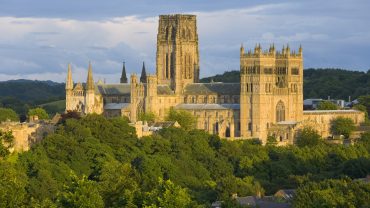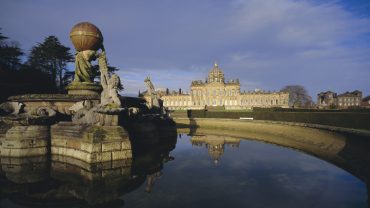Dating back to Roman times, when beacon lights were set on top of coastal towers such as the still‑standing Pharos at Dover, British lighthouses have guided sailors for nearly two thousand years.
Medieval monks often maintained lights in cliff‑top chapels, offering both spiritual and navigational refuge. Yet it wasn’t until the sixteenth century that Trinity House was established under a charter granted by Henry VIII in 1514 as a mariners’ guild and pilotage body, eventually taking charge of lighthouse building. This laid the foundations for a national network which would shape maritime safety for centuries.
By the eighteenth and nineteenth centuries, these coastal custodians underwent a revolution. Innovations such as the Argand oil lamp and Fresnel lens transformed simple flames into powerful beams visible for miles out to sea, while feats of engineering such as Eddystone, Longstone and the South Foreland lighthouses became icons. Grace Darling’s heroic 1838 rescue from Longstone, for instance, turned a keeper’s daughter into a national heroine, cementing the place of lighthouses in Britain as both symbols of safety and courage.
Today, there are around 260 major operational British lighthouses around our coastline, many still run by Trinity House and the Northern Lighthouse Board. Others have found second lives as holiday homes or museums, offering windswept views and front‑row seats to the drama of the sea.
But what are the most picturesque lighthouses in Britain? Come with us on an illuminating journey to find out.
Lizard Point Lighthouse, Cornwall

Lizard Point Lighthouse, Cornwall (Credit: Charles Abbott via Getty Images)
Perched on the southernmost tip of mainland Britain, there’s been a lighthouse on this site since 1619 when Sir John Killigrew was granted a patent. However it came with an extraordinary condition – due to fears that a lighthouse light could guide enemy vessels and pirates safely to shore, it was required that the light be extinguished when such hostile ships approached! After the original lighthouse was demolished, a new one was first lit in 1751, built to guide sailors and to warn of the treacherous rocks and shifting currents off Cornwall’s rugged coast.
One of the most picturesque lighthouses in Britain, the version which stands today began using electric arc lamps in 1878, making it one of the earliest electric lighthouses in the UK. Lizard Point continues to flash a white light every three seconds, and with a range of about 50 kilometres, it still guides boats and ships around the perilous Lizard Peninsula.
Muckle Flugga Lighthouse, Shetland Isles
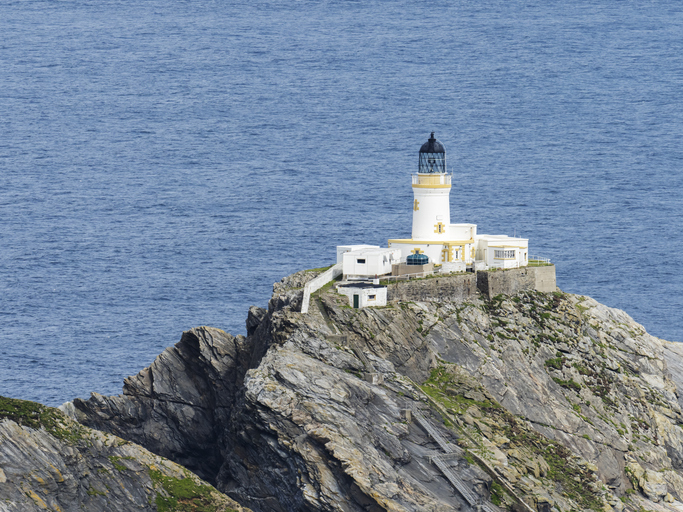
Muckle Flugga Lighthouse, Shetland Isles (Credit: Ashley Cooper via Getty Images)
Originally called North Unst Lighthouse, Muckle Flugga, as it was changed to in 1964, is the most northerly of all British lighthouses. Built by the renowned Stevenson brothers, Thomas and David, between 1854 and 1858 during the Crimean War, its location on a remote, rocky stack in the Shetland Islands made construction incredibly difficult but vitally important for protecting naval and merchant vessels navigating the treacherous northern seas.
With walls over a metre thick and foundations sunk deeply into the rock, the twenty-metre high Muckle Flugga has proved to be incredibly resilient. Today, what has become one of the most iconic lighthouses of Great Britain, Muckle Flugga is fully automated, with its white light visible to a distance of around 40 kilometres.
An interesting aside is that Thomas Stevenson’s son, Robert Louis, visited the lighthouse in the late 1860s and was said to have used it as his inspiration for his famous book, Treasure Island.
Flamborough Head Lighthouse, Yorkshire

Flamborough Head Lighthouse, Yorkshire (Credit: TraceyAPhotos via Getty Images)
Known locally as the Chalk Tower, the lighthouse at Flamborough Head is the oldest surviving complete lighthouse in England. Built in 1674 by Sir John Clayton and George Blake, the striking octagonal structure, one of the most historically important of all British lighthouses, is 24 metres tall and was constructed mostly from white chalk, making it clearly visible by day even without a light. It was originally intended to house a fire basket at the top, burning coal or brushwood to guide ships past the perilous headland, though there is no record that its light was ever kindled.
The current Flamborough Head Lighthouse was built in 1806, designed by Samuel Wyatt for Trinity House to replace the Chalk Tower. It marks the headland for ships en route to Scarborough and Bridlington and was notable for being the first lighthouse to use red glass as part of its light signal – two white flashes followed by one red – a pattern unique to Flamborough.
The lighthouse became the first in Britain to use paraffin as a fuel in 1872 and was electrified in 1940 before finally being automated in 1996. Its modern LED lantern now emits four white flashes every 15 seconds, visible for 33 kilometres, continuing a 200‑year tradition of guiding sailors along this spectacular stretch of Yorkshire coastline.
Souter Lighthouse, Tyne & Wear

Souter Lighthouse, Tyne & Wear (Credit: Gyrohype via Getty Images)
Souter Lighthouse, on the cliffs between the River Tyne and the River Wear in South Tyneside, made history as the world’s first lighthouse purpose-built to use alternating electric current. One of the most iconic lighthouses in Britain, it was designed by civil engineer Sir James Douglass and opened in 1871. It was equipped with a revolutionary carbon arc lamp boasting a dazzling intensity of 800,000 candlepower, visible up to 42 kilometres out to sea. Its piercing revolving white light, combined with a red-and-white sector light to mark dangers in Sunderland Bay, helped save countless vessels from the infamously hazardous Whitburn Steel reefs – a stretch so perilous there were dozens of shipwrecks per mile in the nineteenth century.
Souter was a marvel of Victorian engineering, featuring patented magneto-electric generators and specially designed optics by James Chance. Though originally meant for Souter Point, the tower was actually constructed on Lizard Point for maximum visibility, but retained the Souter name to avoid confusion with Cornwall’s Lizard Point Lighthouse. One of the most revolutionary lighthouses of Great Britain, it remained operational until 1988, passing into National Trust care, and now offers visitors a look at its original machinery, an intact engine room, and keeper’s quarters – as well as legendary tales of ghostly activity.
Beachy Head Lighthouse, Sussex
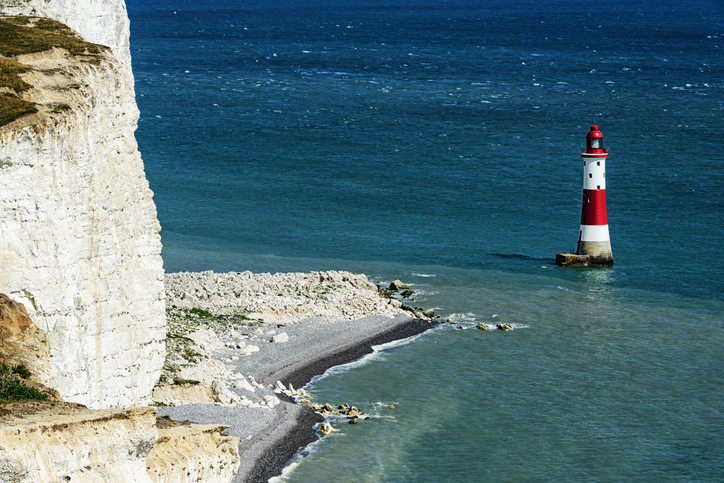
Beachy Head Lighthouse, Sussex (Credit: stevegeer via Getty Images)
Standing at the foot of the towering chalk cliffs near Eastbourne, Beachy Head Lighthouse – one of the most famous lighthouses in Britain, was built between 1900 and 1902 to replace the cliff‑top Belle Tout light, whose beam was often lost in sea mist. Designed by Sir Thomas Matthews, Engineer‑in‑Chief at Trinity House, this red‑and‑white striped tower was the last wave‑washed masonry lighthouse they built. Its soaring 33‑metre granite structure, crafted from over 3,300 tonnes of Cornish stone, was engineered with extraordinary ingenuity – a cableway from the cliff top ferried workers and materials over the sea, while steam pumps protected the foundations from tides.
First lit on 2 October 1902, the lighthouse originally displayed two brilliant white flashes every 20 seconds and later featured one of Britain’s most distinctive daymarks when it was painted red and white in 1951. Its fog signal, triggered by small detonations, warned ships navigating one of England’s most perilous channels, but that ended in 1976.
Automated in 1983 and converted to solar power in 2011, it endures as a marvel of coastal engineering, and movie buffs might recognise it as the lighthouse in the 1968 film Chitty Chitty Bang Bang when the car falls off the cliff and flies for the first time!
Ardnamurchan Lighthouse, Kilchoan, Scotland

Ardnamurchan Lighthouse, Kilchoan, Scotland (Credit: Lukassek via Getty Images)
Guarding the most westerly point of the British mainland, Ardnamurchan Lighthouse was completed in 1849 after three years of construction under the direction of Alan Stevenson, one of Scotland’s celebrated ‘Lighthouse Stevensons’. Rising 36 metres from its rocky headland, the tower is built from rose‑pink granite quarried on the Isle of Mull. One of the most picturesque lighthouses in Britain, its uniquely designed in the Egyptian Revival style – the only one of its kind in the UK – with elegant tapering lines and stylised doorways which nod to ancient temple architecture.
First lit on 5 October 1849, Ardnamurchan originally used an oil‑powered lamp with a French lens and stood watch between the Inner and Outer Hebrides, one of Scotland’s stormiest sea routes. Mains electricity was installed in 1976 and it was automated in 1988. The lighthouse remains operational under the control of the Northern Lighthouse Board, while the former keepers’ cottages now house the Ardnamurchan Lighthouse Trust’s visitor centre and the ‘Kingdom of Light’ museum.
St. Catherine’s Oratory, Isle of Wight
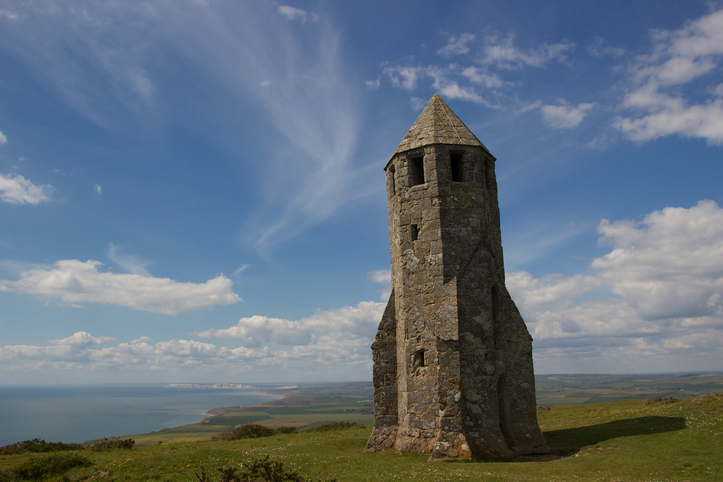
St. Catherine's Oratory, Isle of Wight (Credit: © Ian Lewis via Getty Images)
Known locally as the ‘Pepperpot,’ St. Catherine’s Oratory is Britain’s only surviving medieval lighthouse and the second oldest after the Roman lighthouse at Dover. Completed in 1328 by a local landowner called Walter de Godeton, the lighthouse was constructed as an act of penance ordered by the Church after de Godeton was condemned for stealing wine from a shipwreck off Chale Bay in 1313. The octagonal stone tower originally included an adjoining oratory where a priest maintained the light and said Masses for souls lost at sea.
One of the most fascinating lighthouses of Great Britain, the oratory served as a vital navigational aid until the Dissolution of the Monasteries in the sixteenth century. Its medieval architecture, with its four-sided interior and octagonal exterior, still stands prominently on St. Catherine’s Down, overlooking the treacherous coast. Nearby are remains of an eighteenth century replacement lighthouse that was never completed due to frequent fog. Today, the site is cared for by English Heritage and offers a glimpse into medieval maritime history. The current St. Catherine’s Lighthouse, built in 1838 closer to sea level after the tragic wreck of the Clarendon, continues the legacy of guiding ships safely around the Isle of Wight’s southern tip.
Portland Bill Lighthouse, Dorset

Portland Bill Lighthouse, Dorset (Credit: WhitcombeRD via Getty Images)
Located at the southern tip of the Isle of Portland, Portland Bill Lighthouse is a striking edifice standing 41 metres tall with a single red horizontal band. Completed in 1906, it was, like Beachy Head Lighthouse, designed by Sir Thomas Matthews, and replaced two older lighthouses that had operated since 1716 but were deemed inadequate for warning ships of the hazardous waters around the Bill and the nearby Shambles sandbank.
One of the classic British lighthouses, Portland Bill was equipped with a lens weighing almost three tonnes floating on a mercury bath to allow smooth rotation. Its light flashes four times every 20 seconds, and is visible up to 33 kilometres. Portland Bill has played a crucial role in guiding countless vessels through one of the English Channel’s most treacherous stretches.
Automated since 1996, it remains in operation under Trinity House, maintained as both a vital navigational aid and a Grade II listed architectural gem.
South Stack Lighthouse, Anglesey, Wales

South Stack Lighthouse, Anglesey, Wales (Credit: George Standen via Getty Images)
One of the most remote lighthouses in Britain, and the first beacon along the northern coastline for east-bound ships, South Stack Lighthouse stands on Ynys Lawd, a small island off the north-west coast of Anglesey in Wales. Built in 1809, it was designed by Trinity House architect Daniel Alexander to warn ships navigating the treacherous Irish Sea and busy shipping lanes between Wales and Ireland, especially the Dublin – Holyhead – Liverpool route. The lighthouse tower rises 28 metres above the rock and features a classic tapered cylindrical white tower with a lantern. Its light is visible for more than 40 kilometres to guide vessels safely through the hazardous waters.
Construction was a remarkable feat of engineering given the precipitous cliffs and rough seas. Stone was quarried locally on Ynys Lawd and Penmon and transported by ropeway and cableway during the build. A suspension bridge was later added to connect the island to the mainland. Over time, the lighthouse’s lighting improved with upgraded lenses in the 1870s, electric illumination by 1938, and automation in 1983. It has been a Grade II listed building since 1971, and the surrounding area is now managed as an RSPB nature reserve, attracting visitors who can climb its 400 steps and explore the historic engine room and exhibitions.
Neist Point Lighthouse, Isle of Skye

Neist Point Lighthouse, Isle of Skye, Scotland (Credit: CHUNYIP WONG via Getty Images)
Neist Point Lighthouse, located at the westernmost tip of the Isle of Skye in Scotland, was first lit on 1 November 1909. Designed by the renowned architect David Alan Stevenson, a member of the famous Stevenson family of lighthouse engineers, it was built to warn ships navigating the dangerous waters of the Atlantic.
Constructed using local stone, one of the most imposing British lighthouses was initially manned by keepers until it was automated in 1990, when it became fully operational without a resident crew. The light’s beam can be seen up to 30 kilometres out to sea, guiding vessels safely along this treacherous stretch of coastline.


